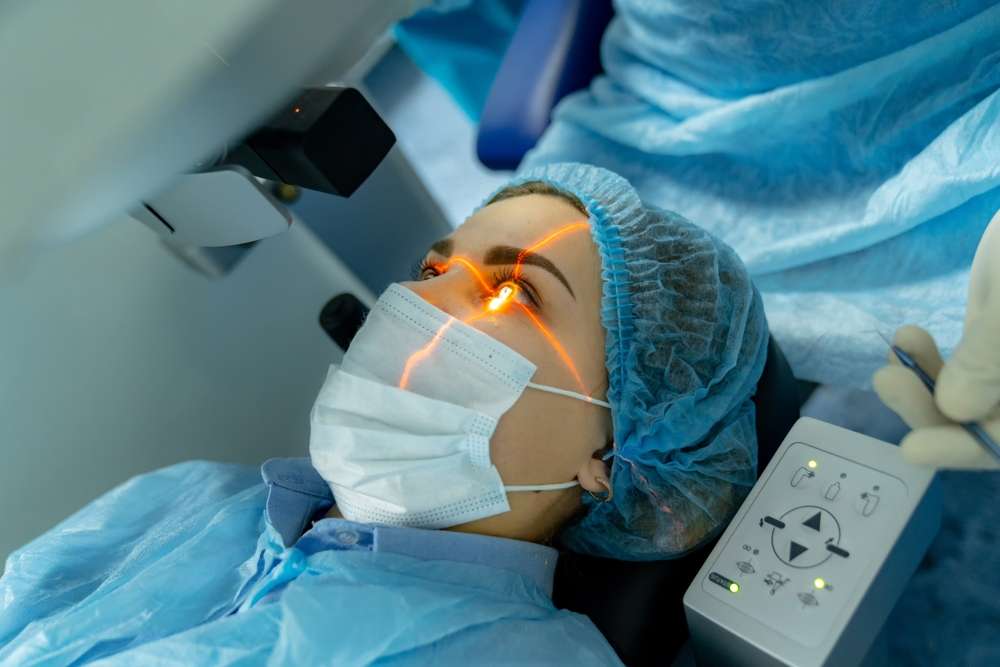Understanding laser eye surgery: What you need to know
Did you know that laser eye surgery can significantly reduce dependence on glasses or contacts? This transformative procedure offers a promising solution for many vision-related issues. But what does the process entail, and who is it suitable for? Laser eye surgery has gained immense popularity over the years as a transformative solution for vision correction. With advancements in technology, millions have opted for this life-changing procedure. But what exactly is it all about? In this article, we will delve into the different types of laser eye surgery, including LASIK, PRK, and LASEK. We'll discuss the benefits and potential risks involved, along with what to expect during recovery. Moreover, we will explore who is an ideal candidate for the procedure and how advancements in technology are shaping the future of vision correction.

What exactly is laser eye surgery?
Laser eye surgery, also known as refractive surgery, is a type of vision correction procedure that uses laser technology to reshape the cornea. The most common form of laser eye surgery is LASIK (Laser-Assisted In Situ Keratomileusis), but other types include PRK (Photorefractive Keratectomy) and LASEK (Laser Epithelial Keratomileusis). During the procedure, a highly precise laser is used to remove microscopic amounts of tissue from the cornea, altering its shape to improve focus and clarity of vision.
What are the main benefits of laser eye surgery?
One of the primary benefits of laser eye surgery is improved vision without the need for corrective lenses. Many patients experience significant improvements in their visual acuity, often achieving 20/20 vision or better. This can lead to increased freedom and convenience in daily activities, sports, and travel. Additionally, laser eye surgery can provide long-lasting results, with many patients maintaining improved vision for years or even decades after the procedure.
What potential risks and complications should I be aware of?
While laser eye surgery is generally safe and effective, like any medical procedure, it does carry some risks. Potential complications can include dry eyes, glare, halos around lights, and difficulty with night vision. In rare cases, patients may experience undercorrection or overcorrection of their vision, requiring additional treatments. It’s important to discuss these risks with your eye surgeon and thoroughly understand the potential outcomes before deciding to undergo the procedure.
What should I expect during the recovery process?
Recovery from laser eye surgery is typically quick, with many patients experiencing improved vision within 24 hours of the procedure. However, complete healing can take several weeks to months. During the initial recovery period, you may experience some discomfort, light sensitivity, and fluctuations in vision. Your surgeon will provide specific instructions for post-operative care, including the use of eye drops and protective eyewear. Most patients can return to work and normal activities within a few days, but it’s important to follow your doctor’s recommendations for a smooth recovery.
Who is an ideal candidate for laser eye surgery?
Ideal candidates for laser eye surgery are generally adults over 18 with stable vision prescriptions for at least one year. They should have healthy eyes free from diseases or conditions that could affect healing. Certain factors, such as thin corneas, large pupils, or certain autoimmune disorders, may disqualify some individuals from the procedure. A comprehensive eye exam and consultation with a qualified ophthalmologist can help determine if you’re a suitable candidate for laser eye surgery.
How is technology shaping the future of laser eye surgery?
The field of laser eye surgery continues to evolve with advancements in technology. Newer techniques, such as SMILE (Small Incision Lenticule Extraction), offer even less invasive approaches to vision correction. Wavefront-guided technology allows for more precise and personalized treatments, potentially improving outcomes and reducing side effects. Additionally, ongoing research into corneal regeneration and gene therapy may lead to revolutionary treatments for a wider range of vision problems in the future.
| Procedure Type | Average Cost (per eye) | Recovery Time | Key Features |
|---|---|---|---|
| LASIK | $2,200 - $3,000 | 1-3 days | Quick recovery, minimal discomfort |
| PRK | $1,800 - $2,500 | 3-5 days | Suitable for thin corneas |
| SMILE | $2,500 - $3,500 | 1-2 days | Minimally invasive, potentially fewer dry eye symptoms |
Prices, rates, or cost estimates mentioned in this article are based on the latest available information but may change over time. Independent research is advised before making financial decisions.
Laser eye surgery has come a long way since its inception, offering a safe and effective solution for many vision problems. While the procedure is not without risks, advancements in technology continue to improve its safety and efficacy. As with any medical procedure, it’s crucial to consult with a qualified eye care professional to determine if laser eye surgery is right for you. By understanding the process, benefits, and potential risks, you can make an informed decision about your vision correction options.
This article is for informational purposes only and should not be considered medical advice. Please consult a qualified healthcare professional for personalized guidance and treatment.




